Artists talk about altered states during the pandemic
We are now about seven months into a worldwide catastrophe that has affected nearly every fiber and facet of our being. Many of us have been sheltering in place, limiting our contacts with the outside world, wearing masks everywhere, and living with low-level anxiety day in and day out. We don’t know when, if ever, the pandemic will be over. We don’t know what the future will look like. And on top of a summer of uncertainty, we’ve had the sad spectacle of a President out of touch with reality, forest fires out of control in California, and riots and protests against police brutality all across the country.
So it’s no surprise that some of us are feeling dazed and confused. My reaction to the enforced monotony and at least partial isolation (I still see a few friends outdoors) has been a new level of irritability and snappishness (I’m normally somewhat cranky, but this summer has really upped my attitude). Also boredom so enervating I really have been ready to scream.
I wanted to know how artist members have been reacting to this unusual period in our history, and the answers surprised me: inertia and fear have led to new ways of working; sheltering in place may at first have been equivalent to staring into space, but now opens up different challenges; an inability to work in one medium forces a turn to other possibilities.
One thing seems certain: No one will emerge from this period totally unchanged. As Abraham Elterman remarks, “This has been a trauma that has deeply touched on our sense of safety and our illusions of stability.”
Julian Hatton: Boredom in general is never a problem. Getting “stuck” once in a while is, but not these days. Being too curious is a problem. And too emotional versus rational. So easy to get swept up in the crisis du jour, whether provoked by the work (“I have to make it better!”) or the newsfeed. Trying to maintain a “tight act,” as in just remaining calm and focused on the work, especially making it, has always been a challenge. Day after day after day.
I have never run out of ideas for paintings. But keeping faith in painting, in art, in good times or bad, has never been easy. It often seems inconsequential, in a world where people “try to make a difference!” Making art is, thank God, in a different realm relative to iPhones and the digital world. Reading alarmist sh*t on the web and messaging friends during this time of isolation is like junk food compared to a healthy in-person meeting. Nature offers serious consolation and a break from painting painting painting. We are lucky to have a place upstate in NY where the landscape, the birds, the air, everything is so fresh.
Having gone thru 9/11, watching it from our roof on Broome Street, then the depression of 2009, one does gain perspective. You just have to keep working. You owe it to yourself.
One huge antidote to any nascent boredom is my wife, Alison Berry, who is a great artist as well, and also relentlessly curious. Every night after a day in the studio we convene in the kitchen. We make dinner while sipping rosé. We discuss our work, our attitude, the latest crisis or distraction, or science, a main focus of Alison’s paintings. Then, at night ,we cuddle with our rather substantial Maine Coon cats and rest up to do it again the next day.
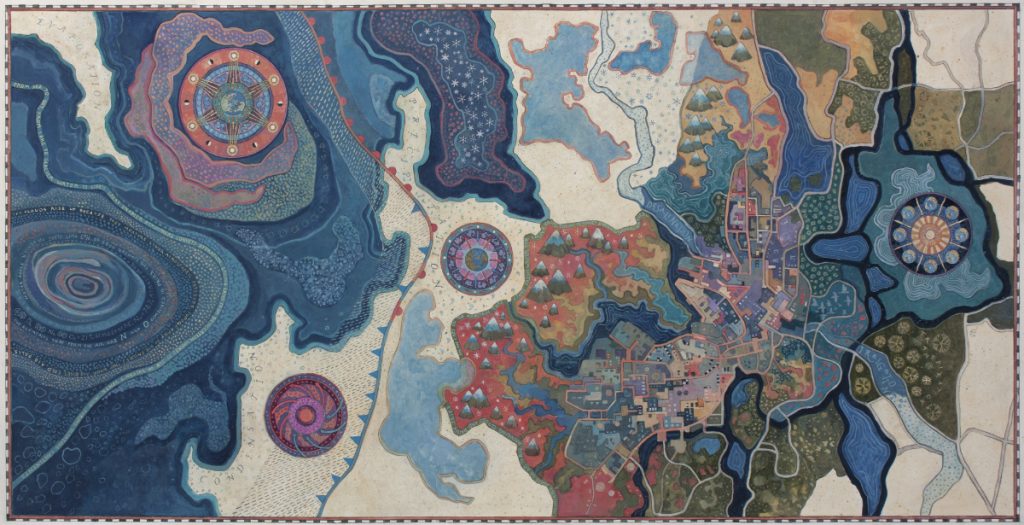
Alison Berry, Hydro Logic, acrylic polymer and pigment, ink and colored pencil on Evolon microfiber, 37 by 73 inches
Alison Berry: Actually, I have not been bored at all, but feeling weirdly and sadly disconnected from the emotional orientation that usually guides me. We artists are accustomed to a lot of solitude, but this Covid-induced isolation has been too much. Without particular deadlines, professional or social events, the days stream by in a blur. I still find my work interesting and challenging, but can’t summon the feelings of urgency and importance that generally prioritize and drive my efforts. Books take on increased significance within the socially distanced mindscape, and a bright spot has been a book group that I host, affiliated with the SciArt Initiative. It’s great to have the regular camaraderie of people in a range of professions from visual arts to neuroscience, tech design, geology, etc. and now we meet on Zoom, of course. We just started Maria Konnikova’s book The Biggest Bluff, the author’s personal story of learning to play professional poker, putting her degrees in psychology to the test, and becoming a champ. No delusions of monetary grandeur here, but the psychological journey is worth a lot of therapy and I aspire to win a few chips from Julian in preparation for the next meeting.
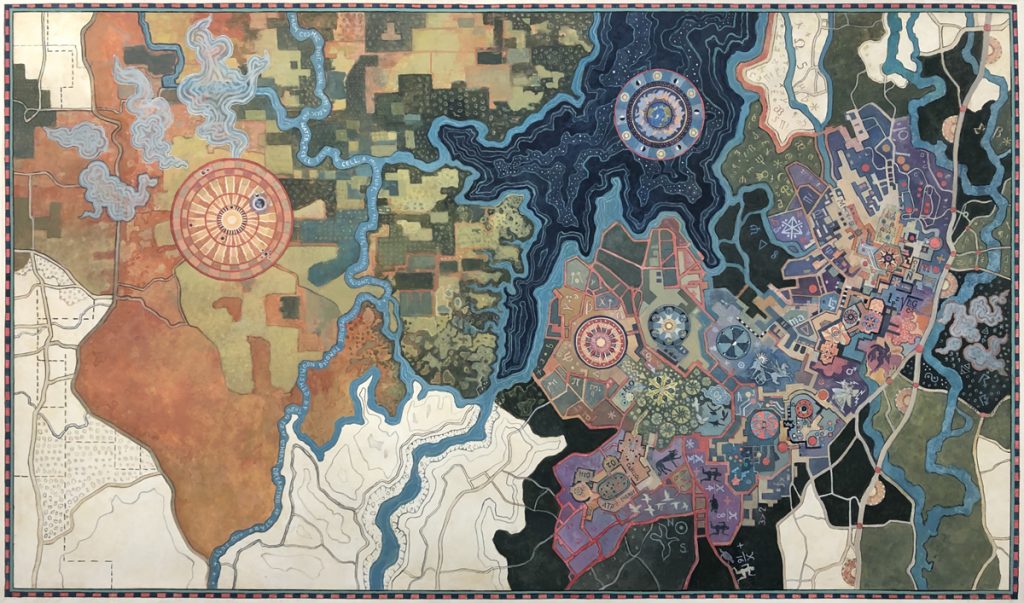
Alison Berry, Food For Thought, acrylic polymer and pigment, ink and colored pencil on Evolon microfiber, 40 by 66 inches
In sum, I am an introvert and tend to live in an interior world of ideas, questions, research and learning. I am enormously grateful to have a studio of my own, and to share thoughts and conversation with my spouse in the evening.
But the pandemic has taught me that while I may never be bored, it’s hard to feel that any of it matters without companionship and community.
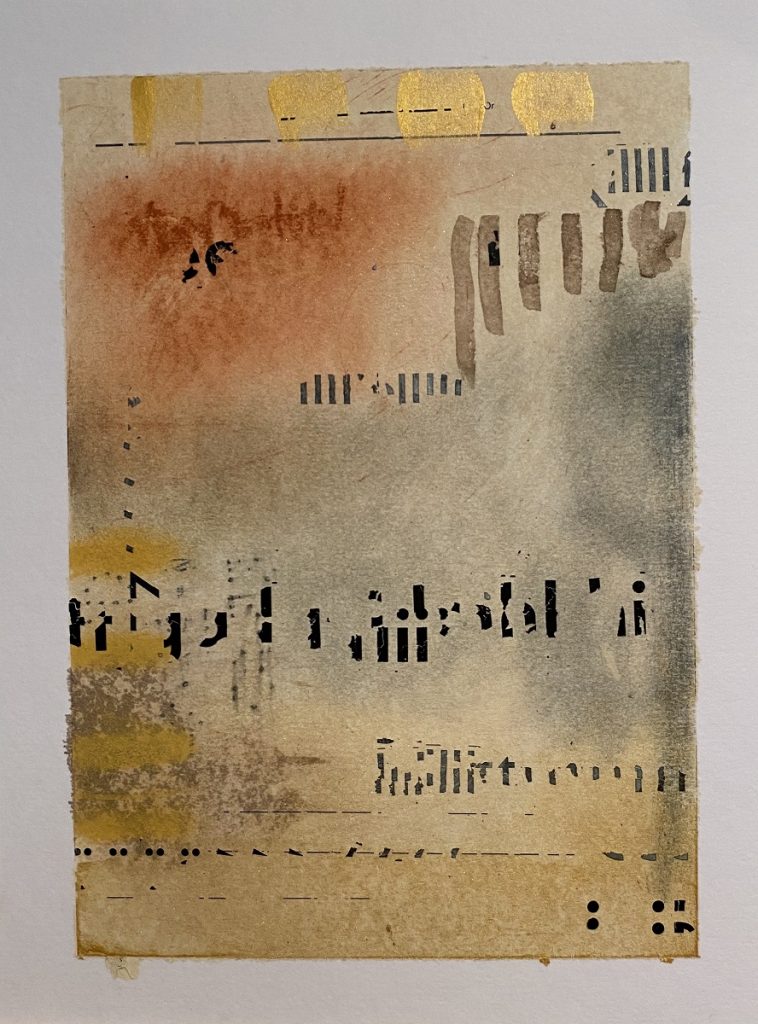
Lisa Pressman, from the “Unmotivated Drawings” series, acrylic, pigment sticks, and Latraset on paper, 12 by 9 inches
Lisa Pressman: In the beginning of the pandemic, even though I lost almost all my income because of classes cancelled, I was excited to have the unlimited time in the studio while coming up with courses for online teaching. I was so grateful to have my studio in my house and everything I needed to continue to make work. However, a few weeks ago something else kicked in. I am not sure if boredom is the right word but more of an extreme case of nonmotivation. I tried to look through art books, went on the internet and did a lot of staring out the window from my couch. I would go down in the studio and clean up, reorganize, look around and leave. One day I just decided to pull out some materials that I had lying around and do some drawings: I called them “unmotivated drawings.” An hour a day, a few minutes, anything to just get some marks down.
A few months later I have a sizable series that started from that unmotivated state. So it might be time to change the name of the series.
Bob Richardson: The times are terrible. I know it when I go out in public, so I don’t go out very often. Can’t get those lunches at the café. Can’t wander the aisles at Trader Joe’s because it’s fast in and out. Consequently I’ve been very productive because one has to do something.
I’m too filled with angst to be bored, but, yes, of course, I ask: Is my work boring? Am I any good, can I get better, is my work professional grade? Questioning those qualities keeps me busy, and thus there’s no time for boredom. On a positive note, my studio is a little small but it’s beautiful.
Nancy Natale: I was kind of walking or sitting around in a daze for a few months and not really too interested in making work. However, I gradually started in on a few paintings that were quite different from my usual work, but that incorporated the same basic processes—cutting up and juxtaposing. Now two of them were just juried into the 70th A-One Show at Silvermine Galleries in New Canaan, CT (through October 16).
After the paintings palled, I took a couple of online classes in printing without a press and experimental drawing, These got me jump-started in making some new works on paper that became a body of work that still has me interested.
So I guess my answer is that my boredom and frustration led me to shake up my work by tweaking it a bit to make it less composed and more free in its arrangements. It’s still me but me with a different spin.
Abraham Elterman: My studio practice has definitely changed if nothing else, because I set up a home studio during shelter-in-place and I haven’t fully returned to my main studio yet. This made me switch from painting to drawing.
I feel more restless and anxious than bored per se, but it’s really hard to pin down if it is the isolation or the worry about the upcoming election; I think that the surreal feeling of being isolated and not being free to go wherever and whenever I want is mixed in with the unreal political situation we are living through.
Maybe the common denominator in both crises (pandemic and political) is a feeling of powerlessness, of claustrophobia, of lack of freedom. And all of this is combined with yearning for people, especially loved ones we have not been able to see in months, and the terrifying prospect of no foreseeable end to the Covid-19 crisis.
Just as my process has changed, so has the imagery. I found myself seeking early images of figures that are very close to each other, leaning into each other seeking comfort, yet they also staying isolated (sitting back to back, facing away, etc.)
I think that we will not know the full effects of current events for a long time and art will reflect these crises. It has been a trauma that has deeply touched on our sense of safety and our illusions of stability. What we thought was a given has been shown to be fragile, and that is very scary for it makes us wonder what else might fall apart next.
Heidi Jung: I completed a large body of work in October of last year, and typically after that happens, I take a bit of time off. January and February were fruitful with a few commissions and then Covid-19 hit.
My studio is in an outbuilding in my backyard and over the last few years I have made the studio and the surrounding grounds my sanctuary. This year working in the garden has been my complete focus. I call it painting with plants.
Because most of my subject matter is nature-based, this has been a nice connection between my creative and practical worlds. Also, I work predominantly in black and white, so it has been a revelation to experiment with color in the garden in a way that I don’t typically exercise in my paintings.
There will be plenty of time to paint in the winter; until then, I’m finding my creativity and inspiration outside and in the dirt.
Nola Zirin: I have never been bored with my work in the studio because I am a constant experimenter. I also have an active fantasy life in my head. When I’m not in the studio, I am looking at images in old art magazines, daydreaming, and remembering people and events in the past that influenced my personal life. At the beginning of the pandemic I found it difficult to focus on painting, although I was lucky enough to be I able to get to the studio. The building in Long Island City is commercial, and It was always open but deserted. The early paintings were about self-isolation and were pretty dark. I started cutting up old canvases and collaged them on to wood panels to which I would add more paint. Days later I would rip off parts of the canvas and rework the images.
As the weeks passed, I decided to use bright, light colors and completed a large yellow canvas. I felt a new kind of freedom in a strange way. The art world was changing, there were no openings to attend, my exhibition had been cancelled, and I was pretty isolated except for family. When I felt sad or anxious, working in the studio helped me stay positive. I listened to a great deal of music from morning to night and limited the constant news of the deaths in New York.
Gwen Gunter: At the beginning, when everything closed down, I had a couple of show openings that were cancelled but that seemed appropriate due to the swirling uncertainty of mid-March. Then I settled in to the shelter-in-place mandate. Since I am definitely an introvert and spend most of my time in my studio, the “new” routine didn’t seem too different from pre-Covid days. But I found that while enjoying a pause from having to show up anywhere and getting into a more reflective frame of mind about my work and the meaning/value of it all, I also was seized by an inability to work.
There didn’t seem to be any “push” to produce. I didn’t feel depressed, just oddly immobile. This went on for several weeks until I finally started doing some drawings using Procreate on the iPad as an entry point back into the process. They were simple and muted in color and felt right for the times, an. I did manage to slowly paint several of them on paper.
Then came the accident, when one of the horses we care for bolted, knocked me to the ground, and stepped on my leg, breaking two bones. I had surgery and have been recuperating since. It is a long recovery due to the severity of the trauma, and recently I found that the bone is not healing as it should, so the recovery will be much longer. Of course this has kept me out of the studio as I can’t be on the leg for long at a time.
So once again I’ve turned to Procreate to work out compositions for future paintings, making an electronic sketchbook of sorts.
Tom Martinelli: I’m not sure the word ‘boredom’ fits for me. It’s actually a word I seldom evoke in assessing what’s going on in my own mental world, as I can be pretty content staring into space for extended periods of time.
So I’m not so much bored as I‘ve been “motionless” during this pandemic. Pandemic combined with a very bad government makes for questions (as well as outright fear) about the future and of course my own place in that future and the “what-exactly-am-i-doing-in-the-studio-anyway?” sort of stuff. I haven’t felt much like working for a chunk of pandemic-time. I’m seeing my current “not working” as something of a call to revisit some of my studio history and check in with my compass. I’d say I’ve been processing more than making… thinking about the how of making rather than what I make. The past has a number of unresolved junctures, which is as true for studio life as for the expanded life which contains it.
When in a transitional time, which this may well be for me, I will often start from scratch, also known as square one. It’s a kind of unencumbered work head that encourages a heightened respect for the simplest of tactile and aesthetic impulses—a kind of painting-based “morning pages.” Rapid, responsive and thoughtless in the best possible way. As well, I’m diving into cataloguing my work in a focused way—every bit of it.
Maureen McQuillan: My Brooklyn studio, in the epicenter of the epicenter, was for me a refuge and a place of safety during the lockdown.
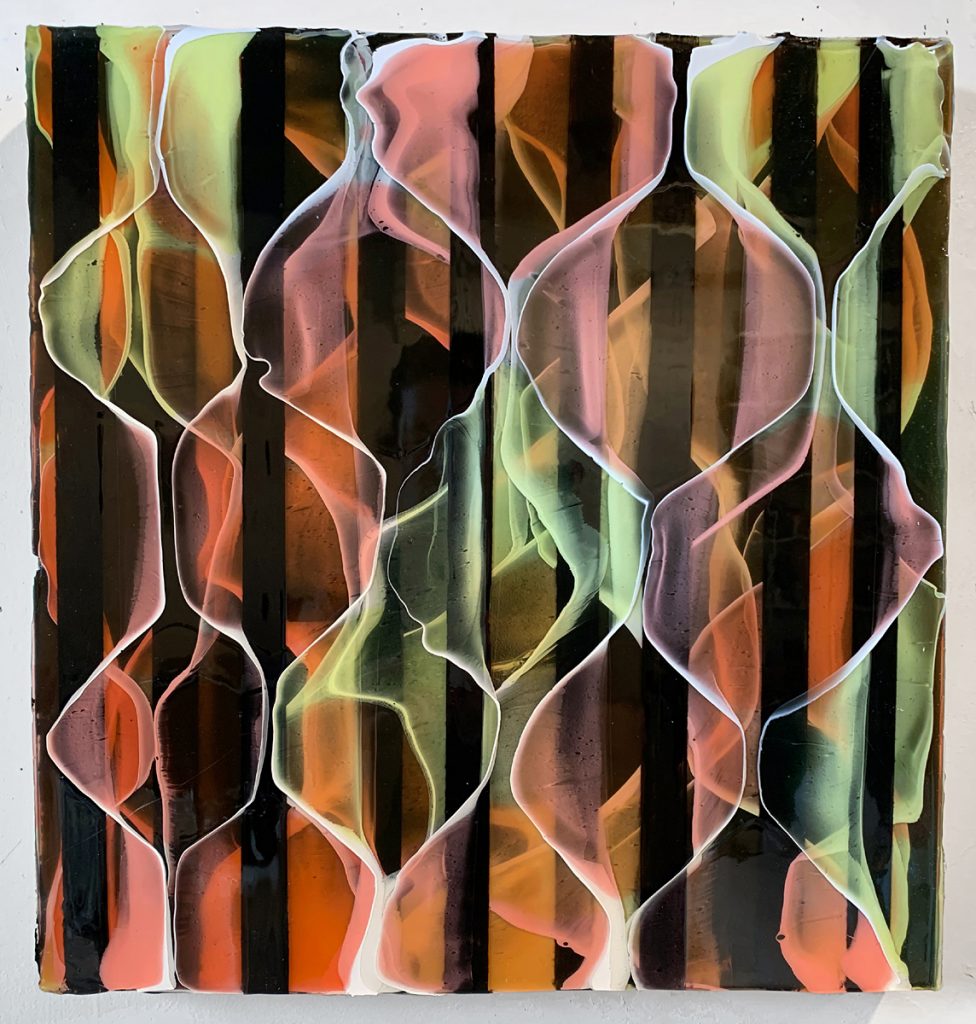
Marueen McQuillan, Untitled (VI/VOYG), ink and acrylic polymers on wood panel, 15.75 by 15 inches inches
My work is very systematic and repetitive. It’s about shutting my mind off and being completely focused. That said, at the end of the day, I missed the energy of the street. I missed going to openings and being energized by seeing other artists and experiencing their work in the flesh.
At one point, I thought I had the coronavirus, and dragged myself to a pharmacy to buy a thermometer. There was none to be had (and no medicines either). I looked online and found that a meat thermometer will do in a pinch (under the arm).
Work is what kept me sane. There’s a deadening sameness to online exhibitions and Zoom get-togethers, even when they’re done well. This strange time has taught me how much we take for granted, how precious relationships are, and always to have a thermometer and some Tylenol on hand.
Top: Abraham Elterman, Pandemic drawing #3, A story with five characters, charcoal and pastel on paper, 19 by 26.5 inches
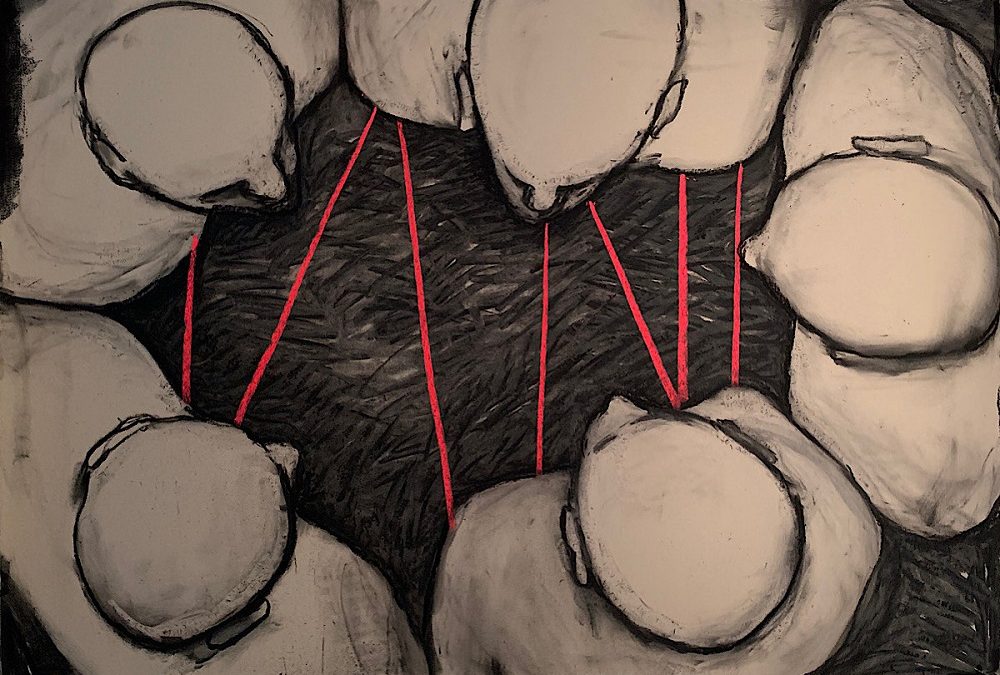
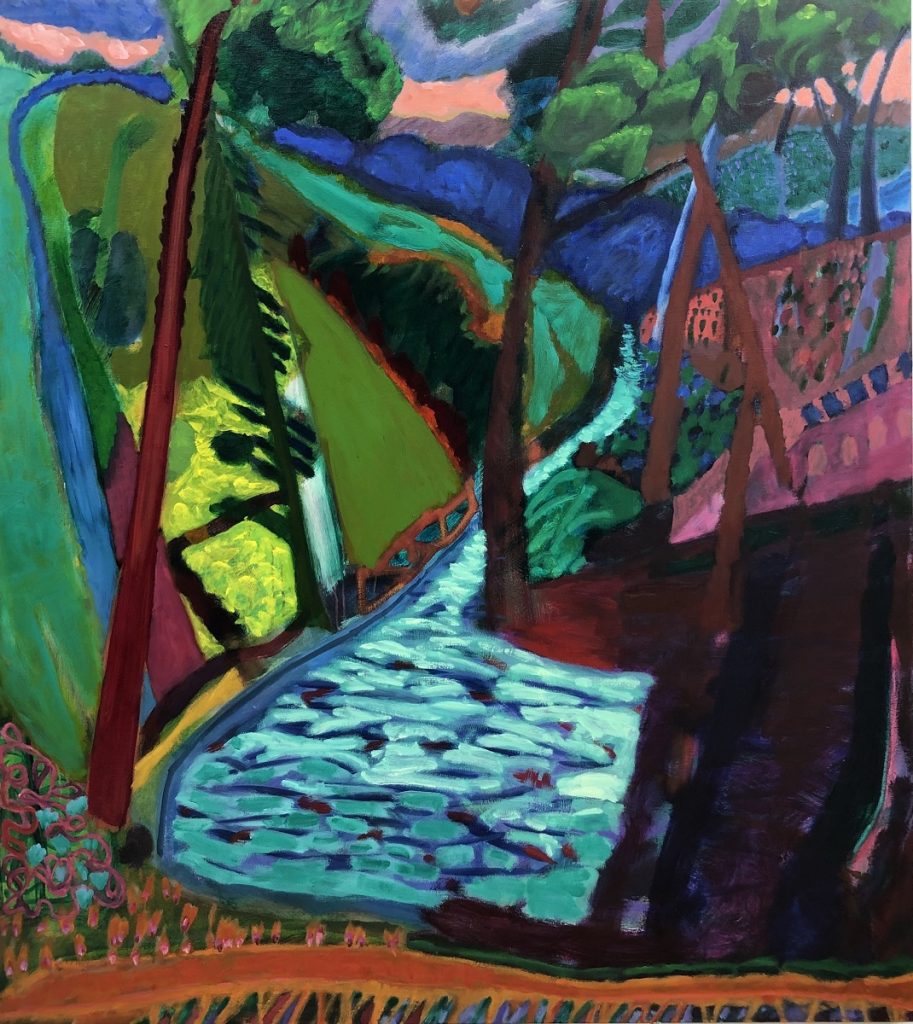
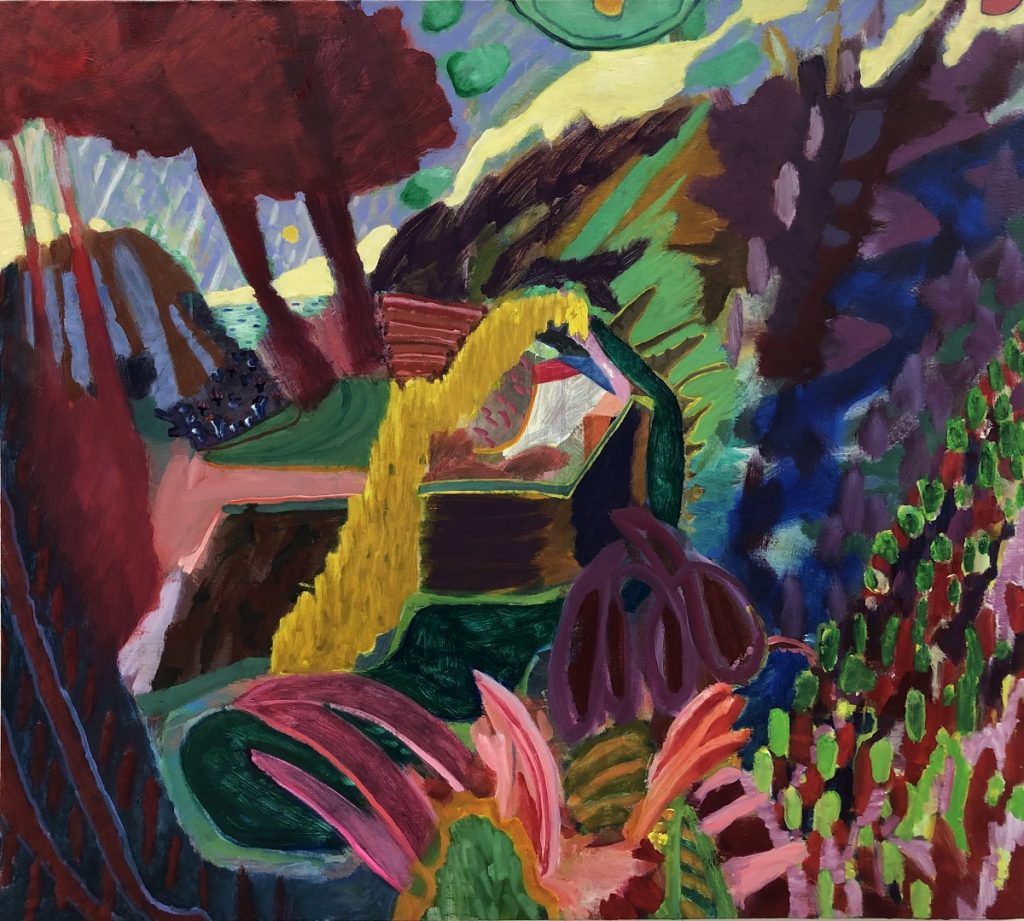
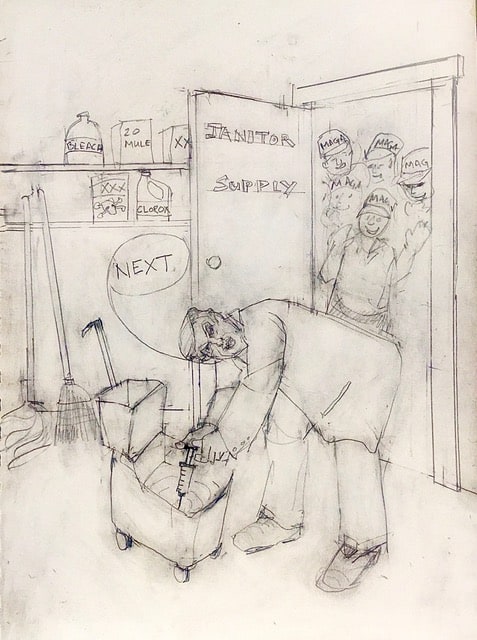
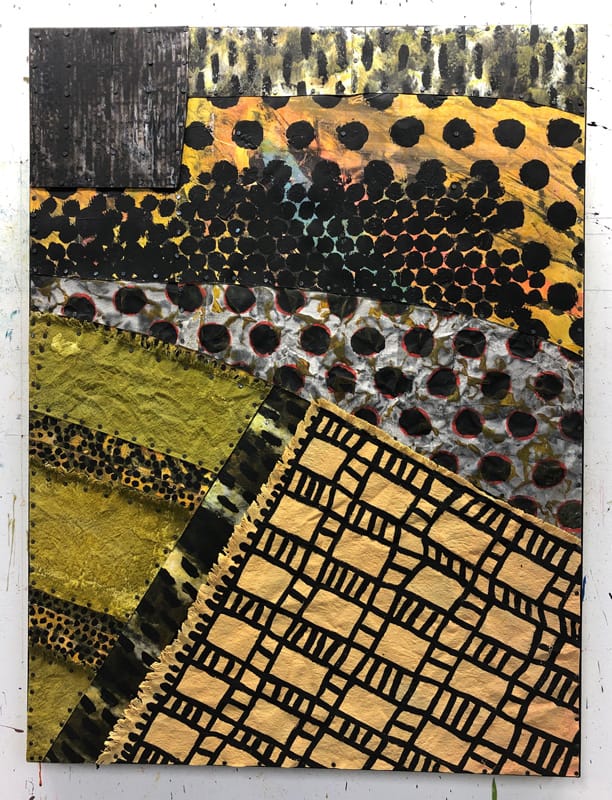
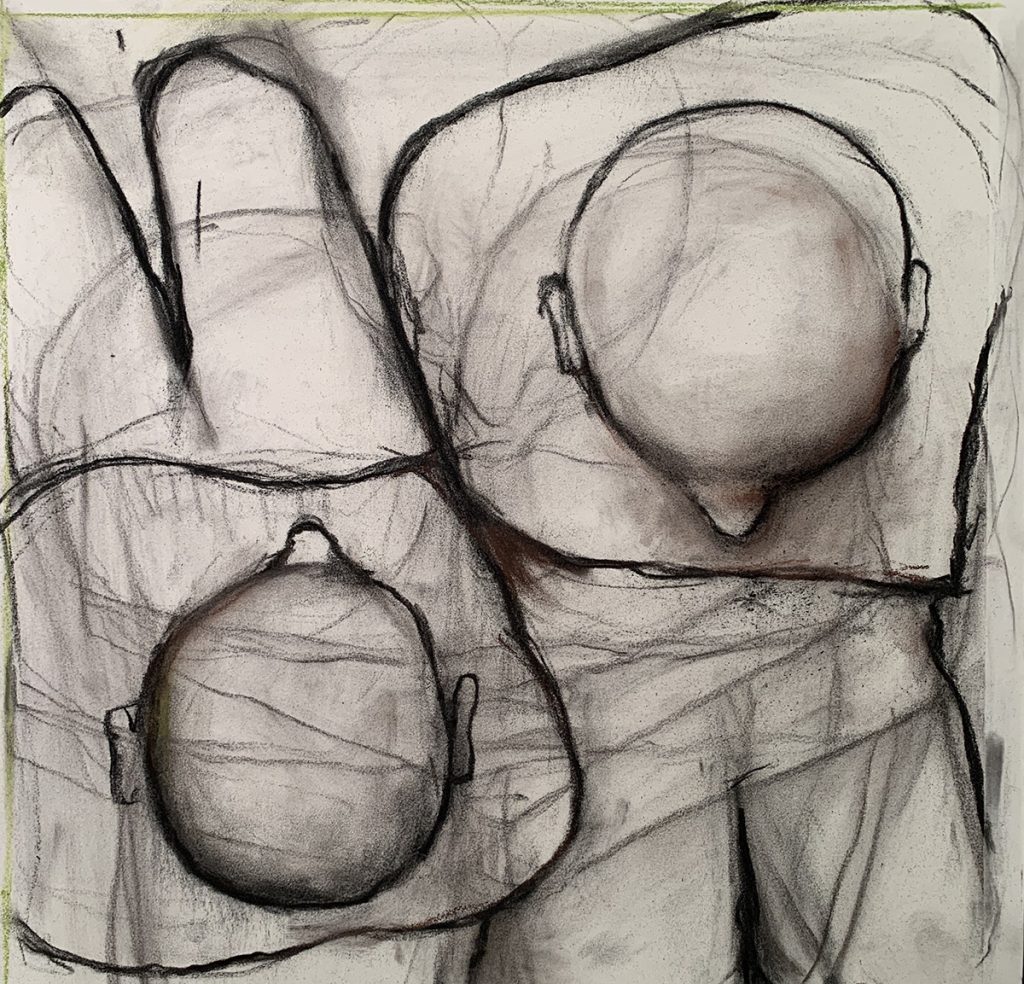
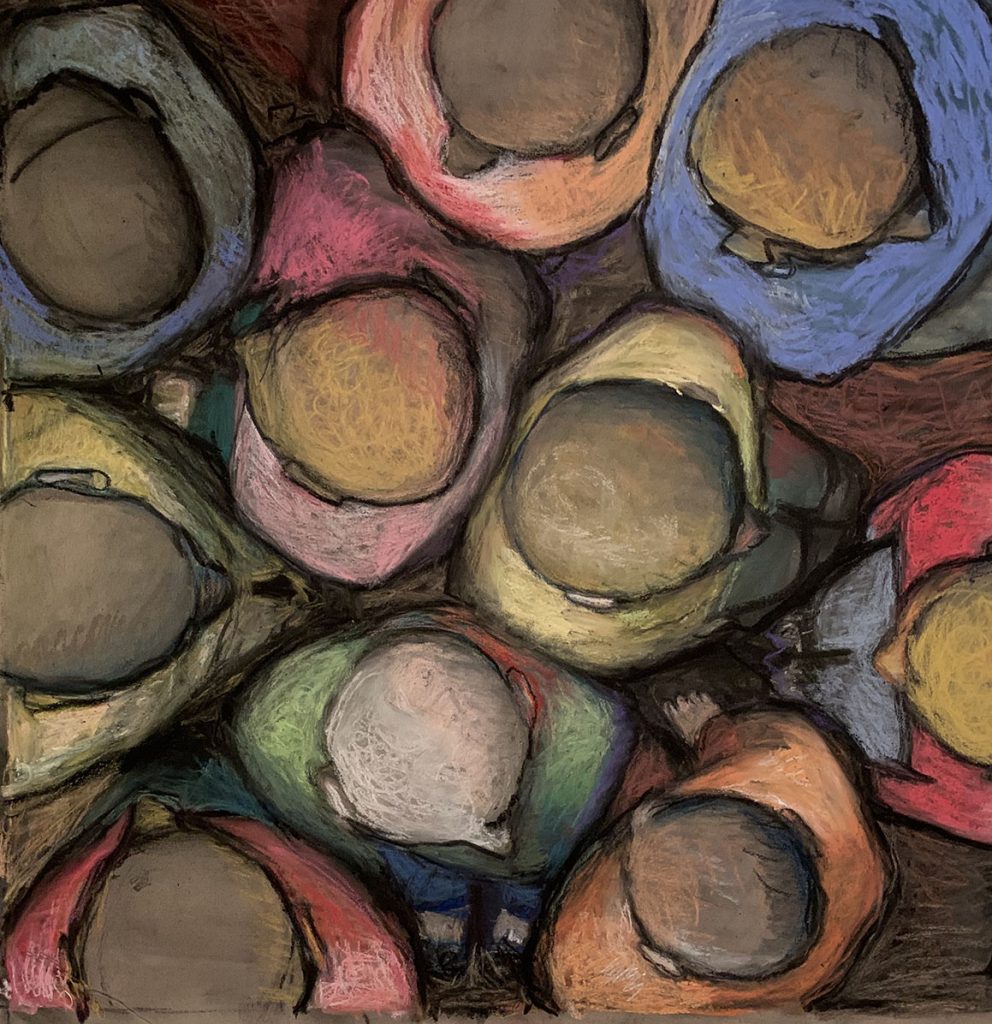
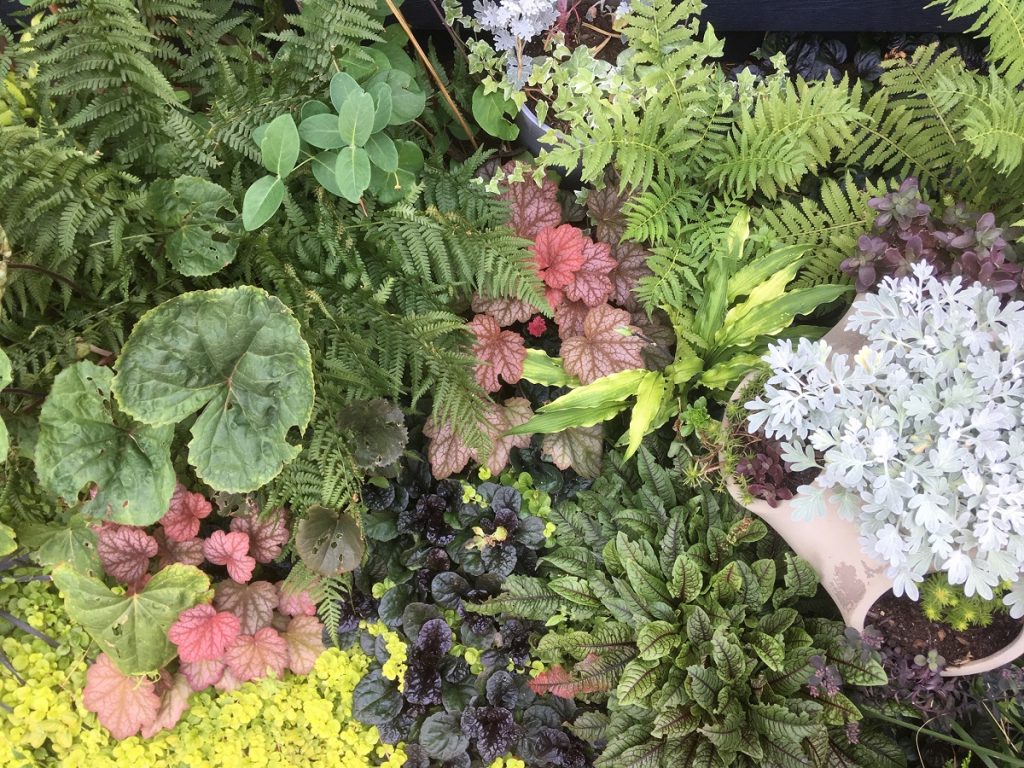
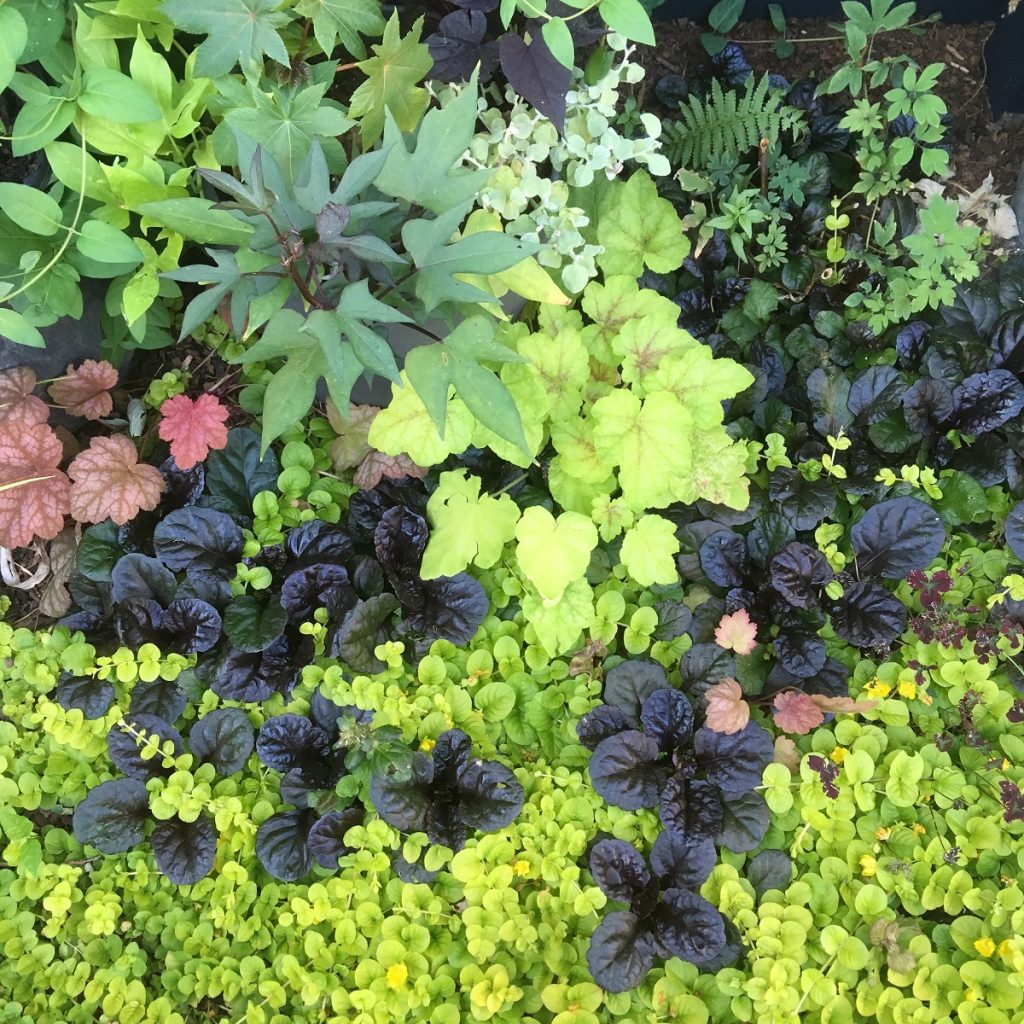
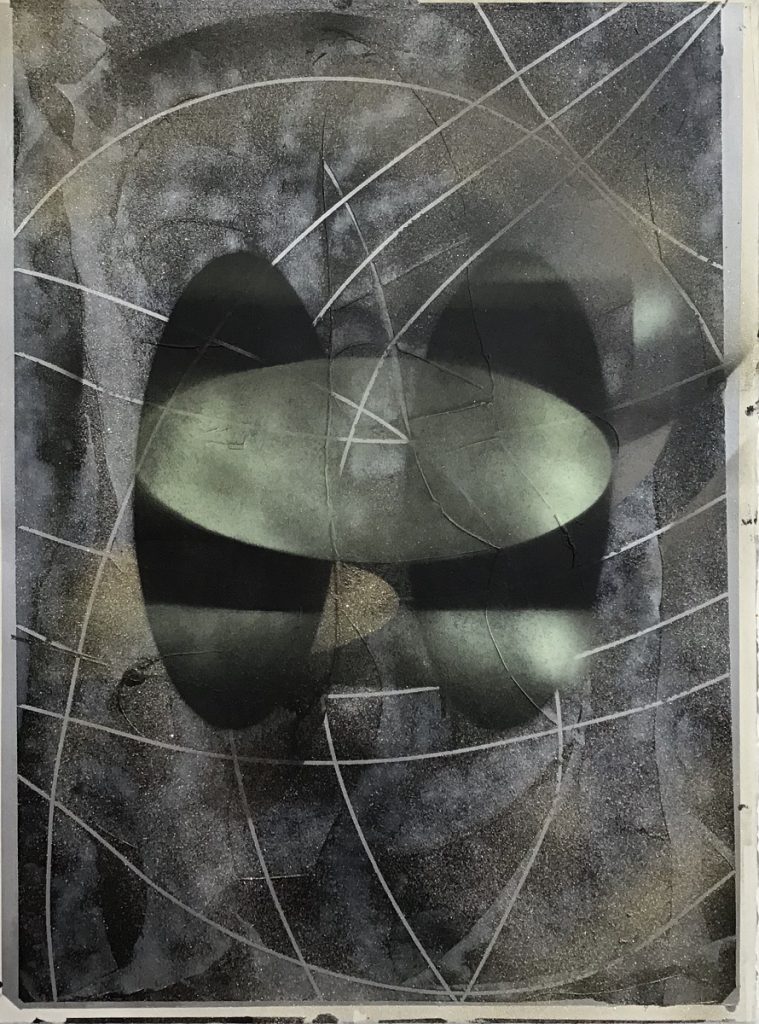
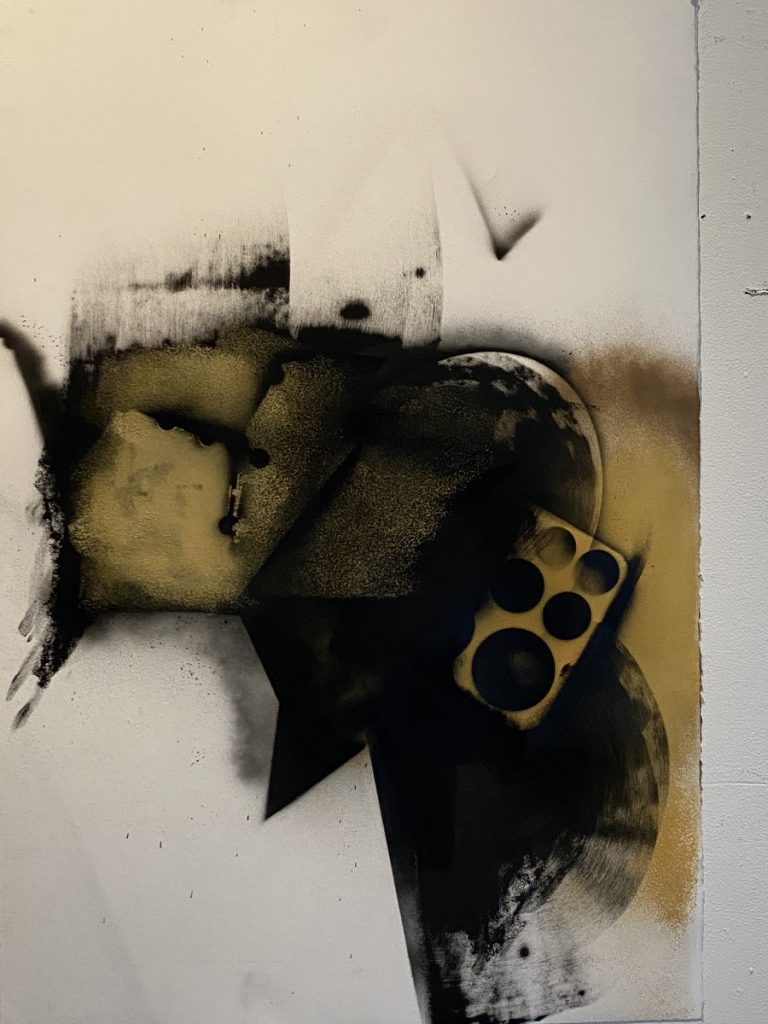
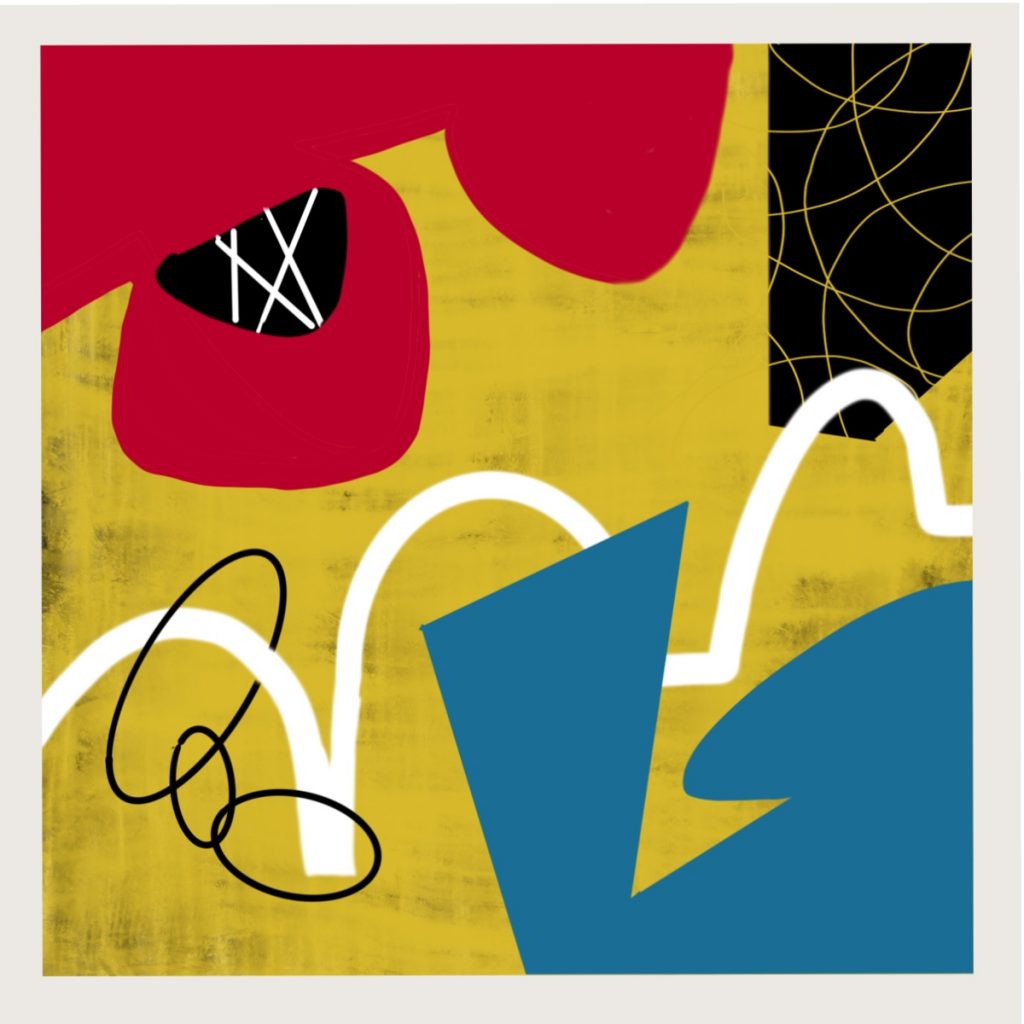
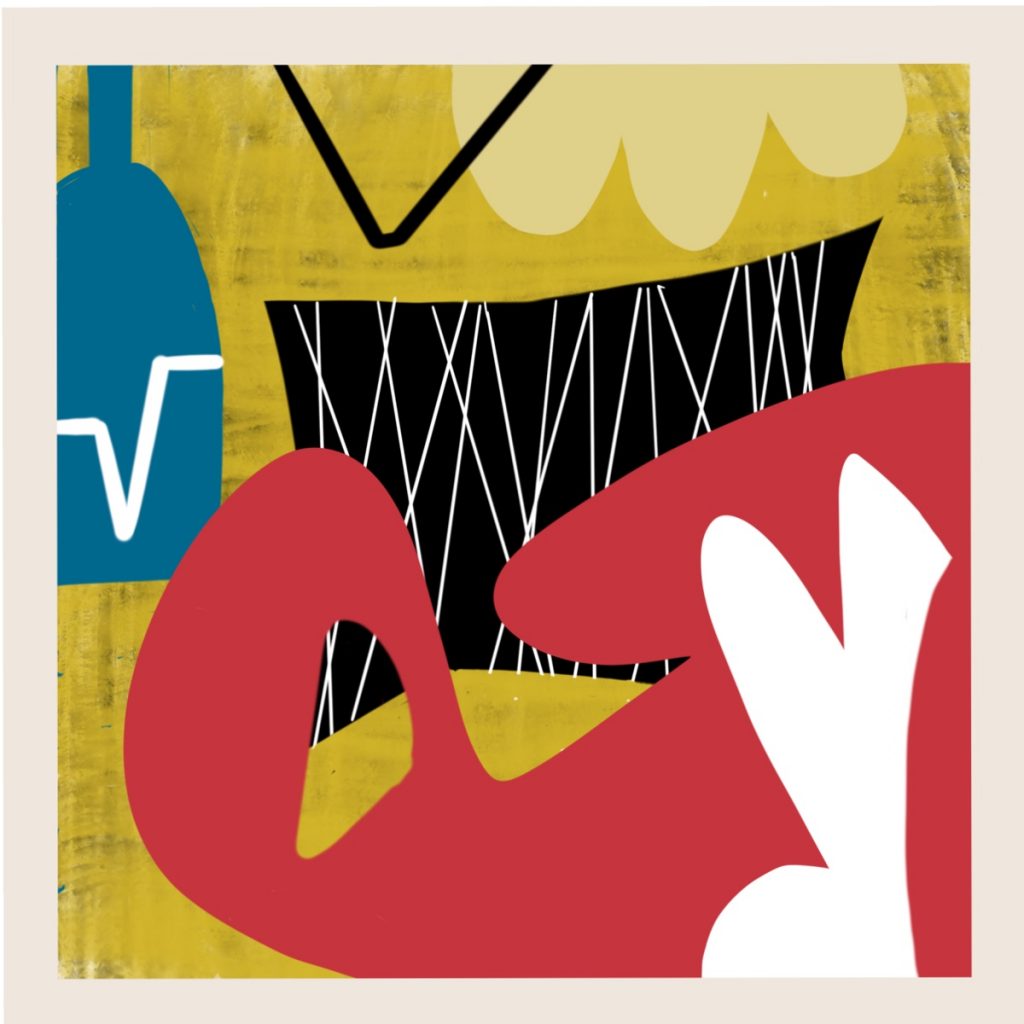
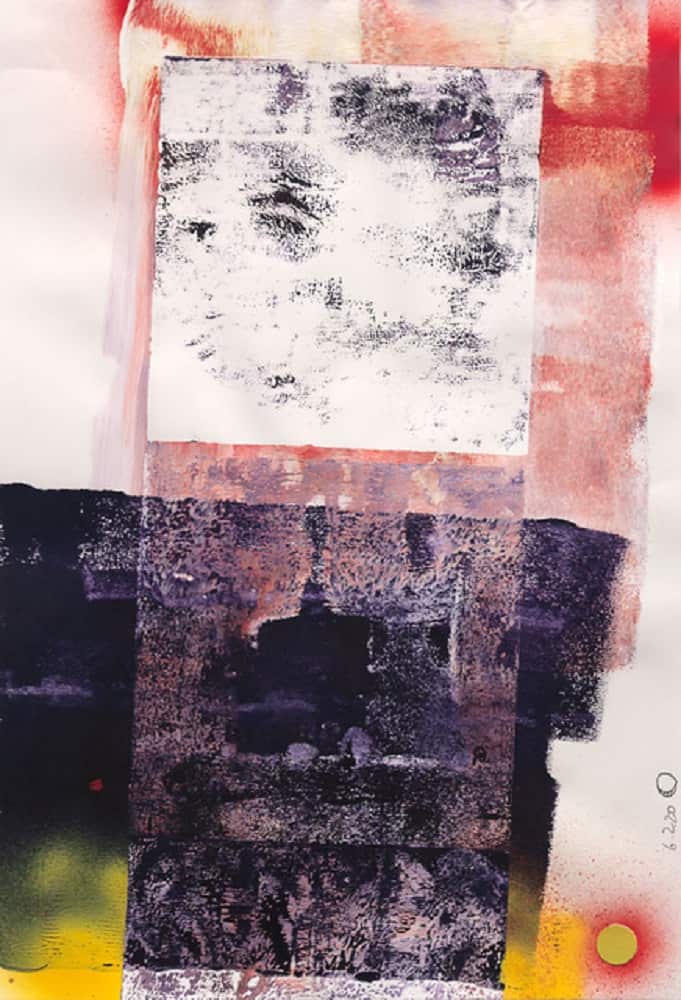
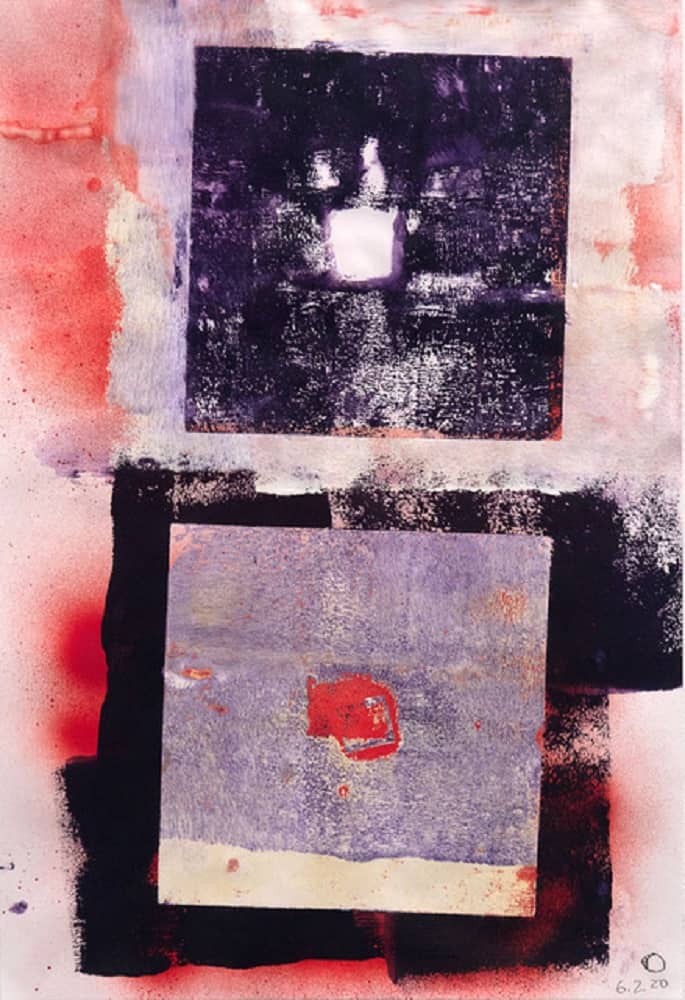
Really enjoyed this peek into other artists’ experiences during the pandemic. I can totally identify with feelings of listlessness, inertia and uncertainty…and of the concurrent need to keep working. Finding a way forward despite the future feeling unstable, unreliable and fragile.